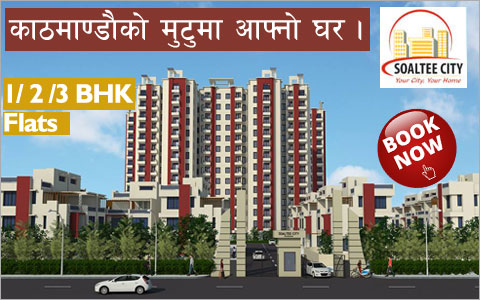National News
The government’s plan to build housing for squatters in the Kathmandu Valley has been held up pending approval of a working policy on squatter settlements. The policy has been waiting for the cabinet’s go-ahead for the last eight months.
The Ministry of Physical Planning and Works had submitted the policy to the cabinet setting the criteria for buying land, building houses and handing them over to the genuine homeless who make up only 25 percent of the 20,000 purported homeless in Kathmandu.
The government has planned to offer housing facilities to at least 60 families in the first phase for which the beneficiaries will have to pay on a long-term instalment basis.
“The delay has affected our activities,” said Mahendra Subba, deputy director general of the Department of Urban Development and Building Construction. “At least we have been able to buy land because of the line ministry’s special provision.”
Out of the total budget of Rs. 130 million allocated for the settlement of squatters last year, the department purchased land worth Rs. 50 million. The remaining Rs. 80 million and the Rs. 150 million allocated for the fiscal year 2008/09 has been frozen as the funds were not used.
The department has bought 3.4 ropanis of land at Ichangu Narayan VDC to build houses for the squatters. This year, the department is expecting over Rs. 130 million to continue its efforts in building housing facilities.
According to the department, there are around 20,000 people living in 73 squatter settlements in the Kathmandu Valley. Some of them have been living in the settlements for 20 years. More than 80 percent of them reside along or close to rivers.
“We have on-site upgradation and land purchase plans from different land pooling projects of the Kathmandu Valley Town Development Committee to build housing facilities,” said Subba. “Most of the squatters have built houses haphazardly within 20 m of riverbanks. We can shift them further from the rivers under the on-site upgradation plan.”
Increased migration and proliferating squatter settlements have led to uncontrolled urban growth in the Kathmandu Valley. There were an estimated 17 squatter communities in Kathmandu in 1985. The number has ballooned to 73 presently.
Bijay Nagar, Sankhamul, Shanti Nagar and Gairigaun squatter settlements are situated along the Bagmati River. Squatters also live along the Bishnumati, Hanumante, Dhobi Khola and Tukucha rivers.
source:The Kathamandu Post (2010),"Squatters’ housing seeks cabinet nod",The Kathmandu Post: Money,14 October 2010,p. 3
- 9th Nepal Buildcon International Expo 2024
- Real Estate Expo 2023
- NRB raises housing loan limit to encourage home constructions
- Nepal Rastra Bank (NRB) Monetary Policy 2080-2081
- New Price of Land in Kathmandu Metropolitan City, Nepal
- Capital Gains Tax Rate on Real Estate Transactions in Nepal 2080-81 ( 2023/24 )
- Kathmandu metropolis implements free parking policy for commercial buildings and hospitals

![[X]](https://www.housingnepal.com/images/popup-close-button.png)


































































































































































































































































































































































































 Facebook
Facebook
 Delicious
Delicious
 Digg
Digg
 Reddit
Reddit
 Stumble Upon
Stumble Upon









